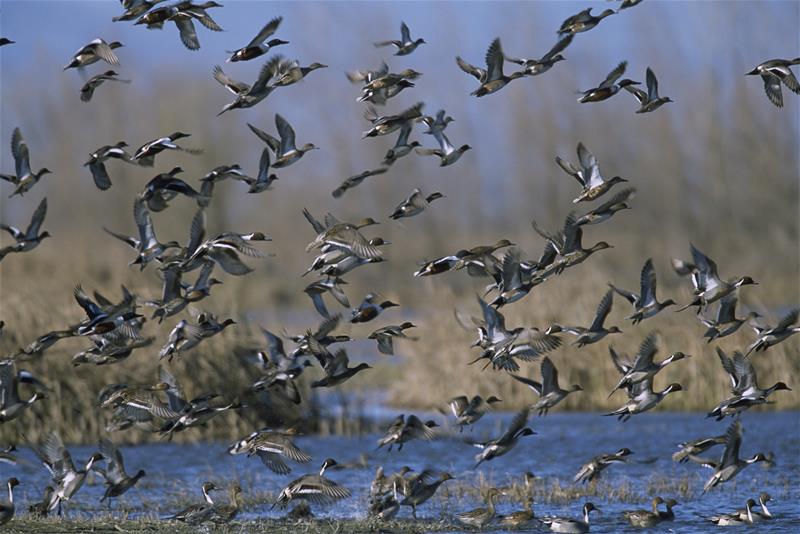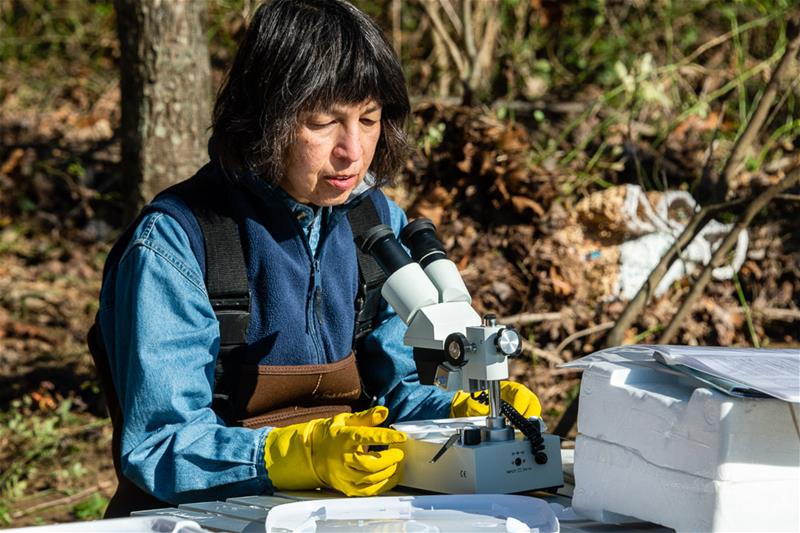In early January 2021, the 117th Congress will get down to business in Washington DC. Later in the month, a new presidential administration will take office. Changes in the leadership of our country always create energy and opportunity – and right now, America is facing a number of environmental challenges that urgently need that extra attention.
In this series of blog posts, we’ll look at those challenges, the common-sense solutions that could bring quick and effective progress, and the actions our leaders can take to turn those solutions into on-the-ground reality.
Water may be the most valuable, miraculous thing on Earth. Seventy-five percent of our planet is covered with it. Ninety percent of our own bodies are made of it. The last true frontiers are deep underneath it. And every living thing we know of depends on it.
Water, then, is a tragic thing to waste, pollute, destroy and otherwise treat as worthless. But that is exactly what has happened throughout much of human history. Noticing water’s ability to carry away, dilute and otherwise get rid of all sorts of unwanted things, people have long used rivers, lakes and oceans as natural garbage disposals.
This seemed fine to most of us until 1922, when anglers finally became so enraged by water pollution that they formed an organization to conserve our streams and countryside. That was the beginning of the Izaak Walton League of America.
The battle the League began nearly a century ago has continued ever since, and it really reached a peak in the 1960s, when rivers began literally catching fire because of the toxic chemicals that had been dumped into them. At that point, it became unavoidably apparent to Americans that water was not really making our garbage disappear. The water was in trouble – and we would be too if we didn’t find ways to protect this critical resource.
In response to this threat and ongoing pressure from the Izaak Walton League and other organizations, the U.S. adopted the Clean Water Act in 1972. Today, it is still one of the strongest and most important environmental laws in our country. But, while no less important than it was 50 years ago, these days the Clean Water Act is less strong than it was originally. Disregard for water is on the rise again, often now in the form of attempts to weaken the laws that safeguard our drinking water supplies and our favorite places for fishing, boating and swimming.
Attempts to undermine bedrock environmental protections come in several forms. One is to simply declare some waterways so insignificant, they don’t even deserve to be counted. The term “Waters of the United States” has long referred to every body of water within our country’s territorial boundaries. It included the headwater streams where mighty rivers originate, seasonal wetlands that provide crucial habitat for ducks and other wildlife, and coastal areas of the Atlantic and Pacific where fish abound and support a thriving economy. But in 2019, a new federal policy stopped recognizing waterways if they weren’t wet all the time. In other words, the United States officially stopped caring about the health of those small waterways.

This, of course, is about as foolish as tossing a good winter coat from your wardrobe. Just because you don’t need it all year round doesn’t mean it isn’t valuable and useful in the right season. Similarly, ducks are absolutely dependent on prairie potholes, and they don’t mind that those low spots on the plains are dry in late summer. The mighty Missouri River starts small, in a braid of tiny streams that you might not even notice or that might appear only a few weeks out of the year, and that has worked just fine for the Missouri (and for the Mississippi and all other rivers) for millions of years.
In the right time, those seasonal streams and wetlands are very important indeed. And when the moment arrives for them to play their part in the hydrological rhythm of our nation, they need to be clean, healthy and ready to fulfill their role. The idea that it’s fine to drain a wetland because it’s dry for half the year anyway makes no sense to a duck looking for a place to raise its young. The notion that it’s no problem to toss trash in a dry streambed, because the litter won’t go anywhere until the next heavy rainfall, does not work out very well for people who want to paddle on the Missouri without encountering floating rafts of garbage.
We can’t change how water moves across vast regions, and we’re not likely to persuade ducks to change their nesting habits. What we can do easily is return common-sense conservation policies to their original purposes. Within his first 100 days, President-elect Biden can restore the meaning of “Waters of the United States” to include every waterway in the nation, regardless of how big it is or how often it’s wet – a meaning that successfully protected America’s natural resources for nearly 50 years with broad bipartisan support.
The incoming administration can also reverse a policy that blocks states from protecting their own resources by ensuring that proposed projects include reasonable measures to limit damage to water quality, including fish habitat and recreational opportunities.
At the same time, the incoming Congress can clarify the meaning of “Waters of the United States” to unequivocally state that all waterways are legally protected from pollution and destruction. That would go a long way toward conserving our natural resources while providing people and businesses with the certainty they need to keep our economy moving forward.

The Biden Administration can also address a second kind of attack on clean water: the dismantling of systems that let us know there’s a problem. Now that rivers aren’t bursting into flame in front of local residents and news cameras, it’s harder for average people to say that water in America is polluted and needs better protection. To be sure our water is safe to drink, we need consistent testing that can uncover the presence of lead, nitrates, excessive chloride, “forever chemicals” and other dangerous substances.
Right now, government scientists are monitoring only 30 percent of streams in America, despite the fact that close to 70 percent of Americans get their drinking water from those streams. And in 2019, the Trump Administration moved to further reduce water quality testing by ordering the Department of the Interior and the U.S. Geological Survey to shut down the Advisory Committee for Water Information and all its associated activities.
Americans have the right to know what’s in their water. President-elect Biden can honor that right by rapidly reactivating the Advisory Committee and its important monitoring programs. The League will be pressing the new administration to do exactly that. At the same time, we’ll continue to supplement federal monitoring efforts by training and equipping volunteer citizen scientists to assess and report on water quality in streams that government scientists still won’t have the capacity to test.
In the first months of the Biden Administration and the 117th Congress, the League will partner with policymakers and allies to ensure that Americans have clean water now and for future generations. And we'll continue our innovative efforts to get more volunteers engaged in stream monitoring. Working at both the national and local levels, we'll continue to lead on water quality issues, as we have for the past hundred years.
You can join in: Learn how you can document the importance of small streams on your next stroll around the neighborhood, or start your journey to becoming a volunteer scientist instantly with our on-demand online training.
Start now